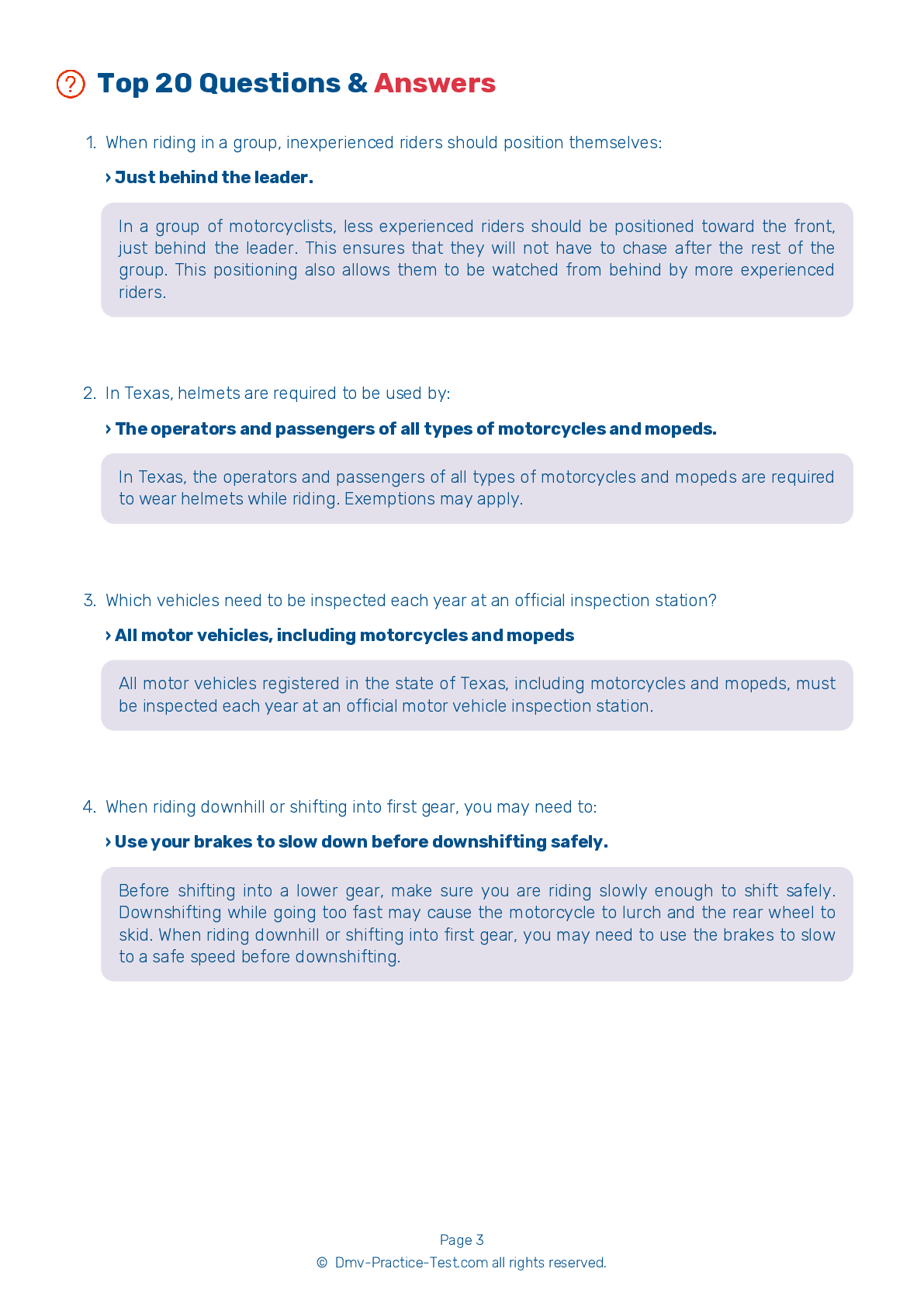Motorcycle Test | License TX 2025 | FREE Online Practice! #5 Page 2 of 4
Take this FREE motorcycle test (license in TX 2025) to check your knowledge of the road rules. To improve your results, download a motorcycle handbook online, study theory, and practice for free on our website. Still worried about how to get a motorcycle license in Texas in 2025? Check our website for more sample tests, train as much as possible, and boost your grades!
6 . When riding downhill or shifting into first gear, you may need to:
Before shifting into a lower gear, make sure you are riding slowly enough to shift safely. Downshifting while going too fast may cause the motorcycle to lurch and the rear wheel to skid. When riding downhill or shifting into first gear, you may need to use the brakes to slow to a safe speed before downshifting.
7 . When riding at night, a motorcyclist should maintain a minimum following distance of:
Because it is more difficult to see and judge distances in the dark than in daylight, you should maintain an expanded following distance of at least three seconds when riding at night. It may take you longer than usual to realize the vehicle in front of you has stopped and you may need additional time to slow or stop to avoid hitting the vehicle.
8 . Usually, a minimum following distance of _____ should be maintained.
Generally, you should maintain a minimum following distance of two seconds. Increase your following distance to at least three seconds whenever you are riding under conditions that are less than ideal.
9 . When turning a three-wheeled motorcycle, you should:
When entering a turn on a three-wheeled motorcycle, you should decrease your speed and slightly lean your upper body in the direction that you intend to turn. Steer your front wheel toward the turn and accelerate gradually as you exit the curve.
10 . The best way to handle tailgaters is to:
If possible, change lanes and let a tailgater pass your vehicle. Speeding up may result in the driver continuing to tailgate you at a higher speed, thereby increasing the danger.
See the exact questions that will be on the 2025 Texas DMV exam.
99.2% of people who use the cheat sheet pass the FIRST TIME
Jeneen was tired of paying $5/gallon. She got herself a scooter that required the motorcycle license. She studyed the motorcycle test cheat sheet and passed her test the next day!
Christopher tells us how he knew nothing prior to obtaining the motorcycle study guide, and he only got one question wrong because he clicked on the wrong answer by mistake.



